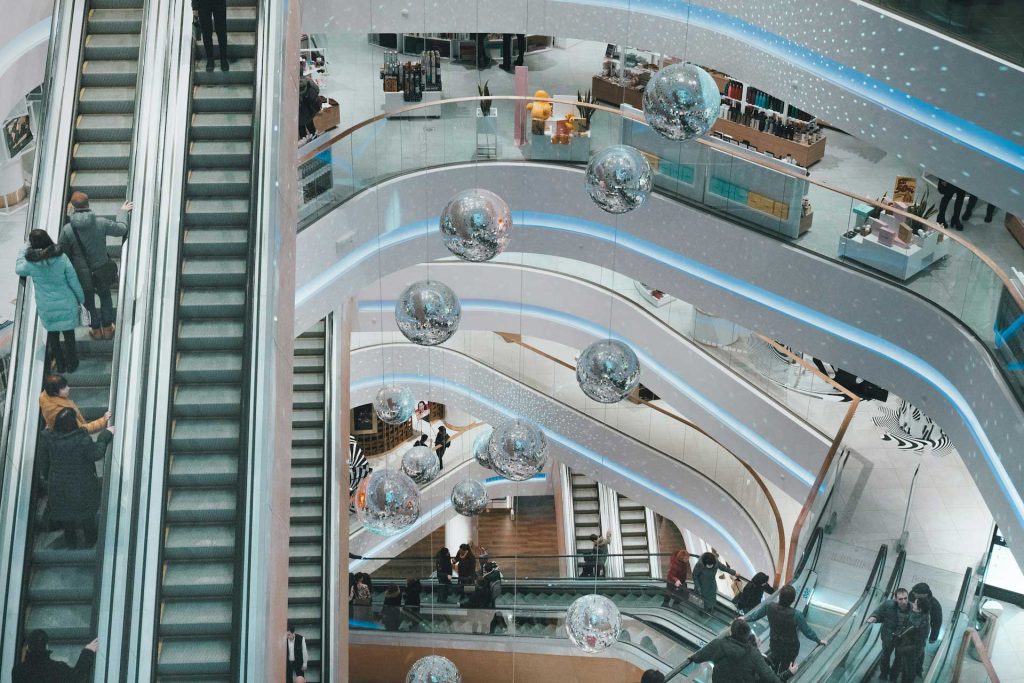The retail real estate market, like any other, is constantly changing and adapting to consumer preferences. These market dynamics are driven by evolving consumer behavior, technological advancements, shifts in economic conditions, and the retailer’s needs.
The entire real estate market industry is still adapting to the post-pandemic landscape and the aftermaths of lockdowns and isolations, pushing retailers and property developers to rethink their previously used traditional models to stay competitive and meet the emerging demands in the retail space.
Experiential Retail
The concept of experiential retail dominated the markets in 2024, and its rise is likely to continue in 2025 as the direct consequence of the pandemic and evolving consumer expectations, as well as various brands’ personalized catering to their customers.
With e-commerce continuing to erode traditional brick-and-mortar retail sales, physical commercial properties are now being repurposed as hubs for unique, immersive experiences. Retailers are now focusing on creating spaces where their customers can engage with the brands in previously impossible ways.
It’s noteworthy that shopping and retail centers also embrace this trend by offering entertainment zones, dining options, and community-driven activities. These additions aim to boost foot traffic.
Focus on Mixed-Use Development Continues
Mixed-use development is transforming urban infrastructure by combining multifamily housing, office spaces, and retail areas, all near one another or even within the same commercial property.
These property types usually cater to time-pressed professionals who prefer to have everything they need at arm’s length. Commercial real estate projects that rely on such a mixed format continue to rise, and this retail real estate trend is expected to grow further.
Expanding into Suburban and Secondary Markets
Suburban and secondary markets are now emerging as hotspots for retail real estate investments, propelled by the lack of affordable housing, spiraling residential rent growth, the saturation of capital markets, and the lifestyle choices brought by remote work conditions.
These retail markets now offer lower costs for developers and retailers and provide the opportunity to tap into previously untapped consumer bases.
Retail Fundamentals Remain Strong
The retail fundamentals remain rather strong, with healthy occupancy rates in major areas and rapid development in suburban and secondary markets. While some big-box retail vacancies do arise, leasing activity remains strong, with numerous big or local brands filling these spaces.
Rents have also seen steady growth, with smaller tenants generally renewing at stated lease terms and larger occupiers, like grocery stores, often negotiating reductions for more favorable agreements, affecting investors’ valuation strategies.
Despite headwinds, the overall commercial real estate market remains solid, supported by resilient consumer spending and limited new supply in major areas.
The Market Tightens
While strong tenant demand and limited new supply ensure that the vacancy rate remains low, the market tightens due to limited new construction. Only 46 million square feet of retail space was started in 2023, which is 56.1% less compared to 2022, and more than 18 million square feet of obsolete retail space was demolished, further tightening the grip.
Due to these market changes, retailers prioritize high-quality spaces to create unique brand experiences. This evolution demands agility from tenants and landlords, which leverage creative initiatives, such as community events, to retain tenants. This only underscores the role of experiential marketing in today’s retail sector.
Why Choose Equity Retail Brokers
The experts at Equity Retail Brokers know commercial real estate inside and out, from landlord and tenant representation to single- and multi-tenant property sales, investments and leasing, asset management, 1031 like-kind exchanges, and other services. If you want to learn more about real estate market trends, don’t hesitate to contact us.
